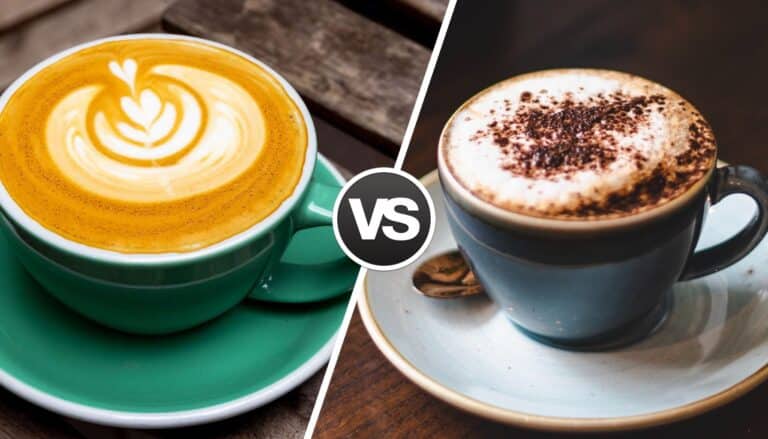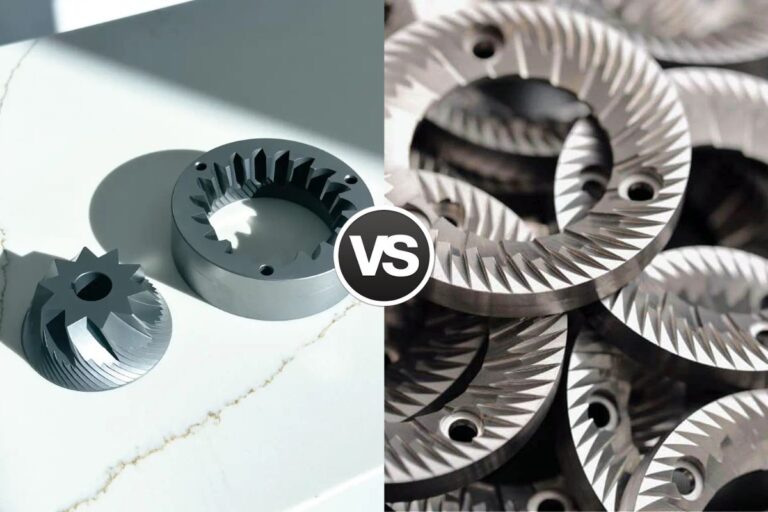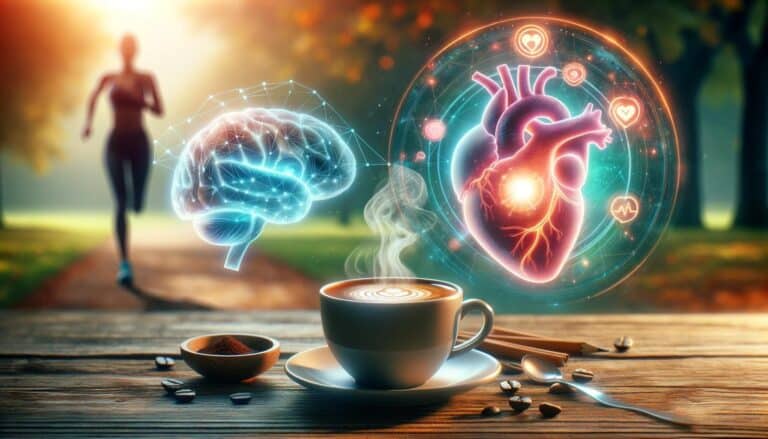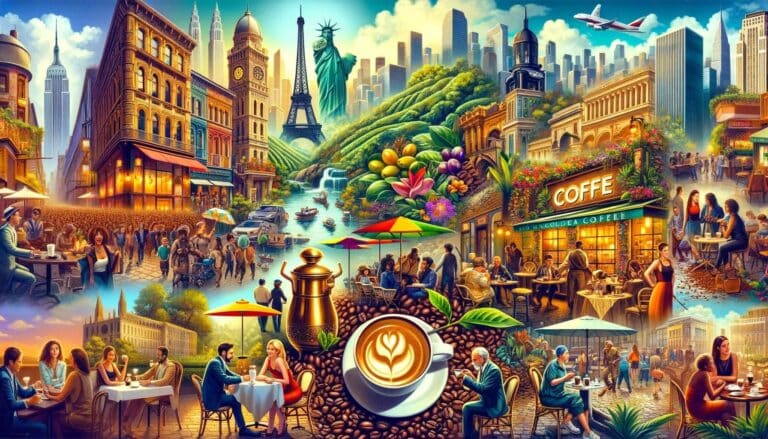Don’t let the small size fool you—espresso packs a punch with its intense flavor and rich aroma. But what exactly is espresso? What are the different types of espresso drinks, and what does the term espresso even mean? We’re here to answer all your questions about this mighty little caffeine boost. By the end, you’ll be ready to brew your own espresso at home with confidence.
What is Espresso Coffee?
Espresso is a beloved choice for many, whether enjoyed in a latte, cappuccino, or as a straight shot. But what makes it so special? Simply put, espresso is a type of strong black coffee made by forcing hot water through finely-ground coffee beans at high pressure.
Though it might sound similar to a regular cup of coffee, espresso is quite different. The process involves much more pressure and a significantly faster brewing time, resulting in a concentrated and flavorful shot that’s the heart of many popular coffee drinks.
The Origins of Espresso
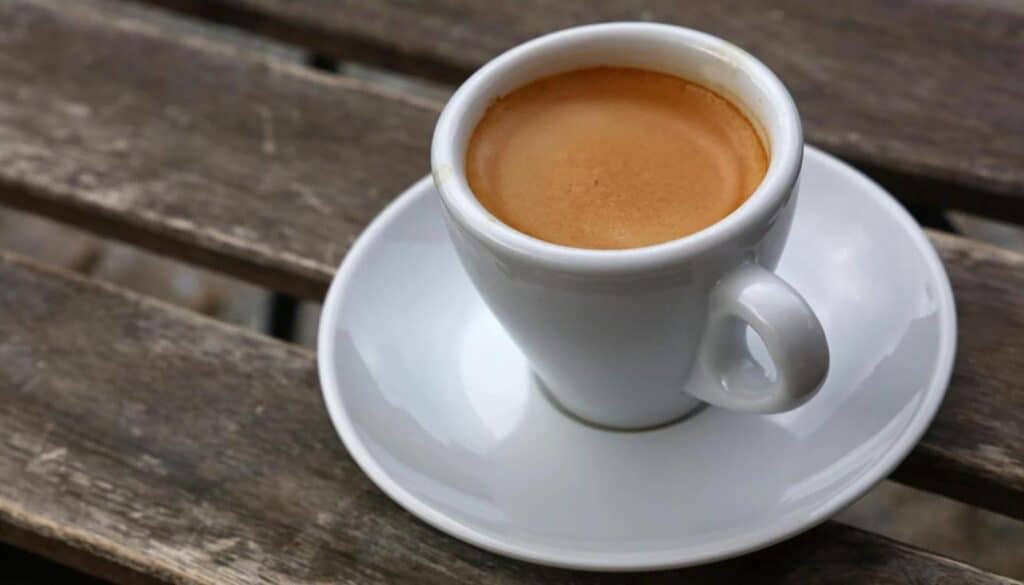
Espresso, derived from the Italian word “esprimere,” meaning “to express” or “to press out,” aptly describes this coffee brewing method. The story of espresso begins in the late 19th century, a time when coffee consumption was already a daily ritual in Europe. However, the traditional methods of brewing coffee were labor-intensive and time-consuming, especially for workers with limited break times.
In 1884, Italian inventor Angelo Moriondo patented the first steam-driven coffee machine designed to produce coffee quickly. However, it was Luigi Bezzera and Desiderio Pavoni who revolutionized this concept in the early 20th century. Bezzera’s invention of a machine that forced hot water through finely-ground coffee under high pressure, combined with Pavoni’s improvements, led to the creation of the modern espresso machine. Their invention debuted at the 1906 World’s Fair in Milan, marking the beginning of espresso as a fast, flavorful coffee option.
Evolution of Espresso Machines
The early espresso machines were far from perfect. Bezzera’s machine, though innovative, was prone to inconsistencies in pressure and temperature, leading to variations in the quality of the coffee produced. Pavoni’s introduction of the pressure release valve and steam wand significantly improved the process, allowing for better control and the creation of frothy milk for drinks like cappuccinos.
By the mid-20th century, the development of piston-driven machines by Achille Gaggia further refined the espresso-making process. These machines used a lever to generate the necessary pressure, resulting in a more consistent and higher quality espresso. Today, modern espresso machines have advanced features like electronic temperature controls and programmable settings, ensuring a perfect shot every time.
The Art and Science of Making Espresso
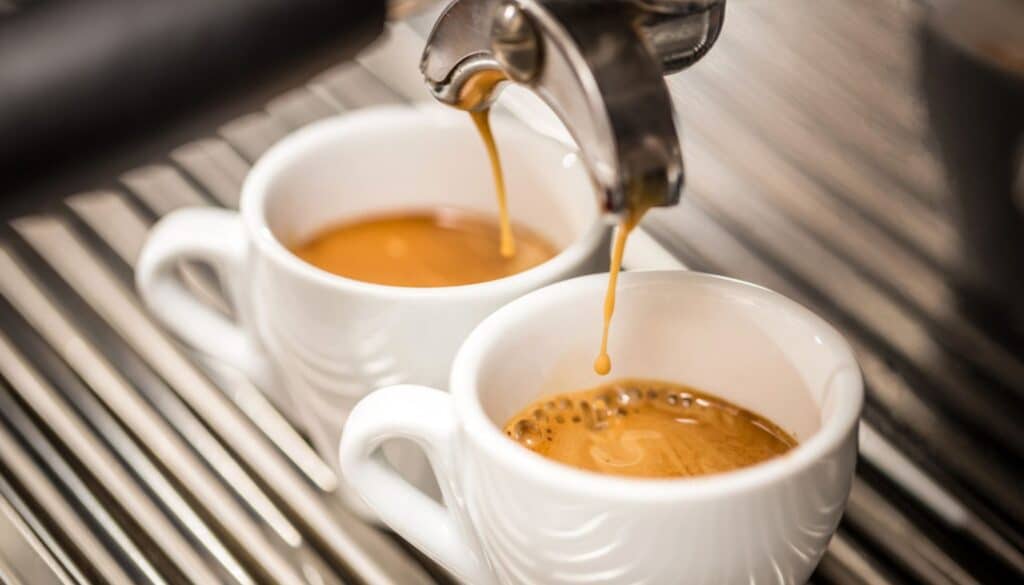
The Espresso Machine
An espresso machine is essential for making authentic espresso. It operates by forcing hot water through finely-ground coffee at high pressure. The quality of the machine significantly influences the consistency and flavor of the espresso shot. Key components include the boiler, pump, and group head. The machine must maintain a stable pressure (around 9 bars) and temperature (around 90-96°C) to ensure a perfect extraction.
The Grind
The grind size is crucial for espresso. The coffee needs to be finely ground to provide the right resistance as water is forced through it. Too coarse a grind results in under-extraction, producing weak, watery coffee, while too fine a grind leads to over-extraction, resulting in a bitter taste.
The Recipe
A standard espresso recipe might involve using 18 grams of coffee to yield 36 grams of liquid espresso within 28 seconds. However, this can vary based on personal preference and the specific coffee bean used. The goal is to achieve a balanced extraction that highlights the coffee’s unique flavors.
The Crema
One of the hallmarks of a well-pulled espresso shot is the crema—a golden, foamy layer on top of the coffee. The crema is a result of emulsified oils in the coffee and serves to trap the coffee’s aromatic compounds, enhancing the flavor experience.
Types of Espresso Drinks
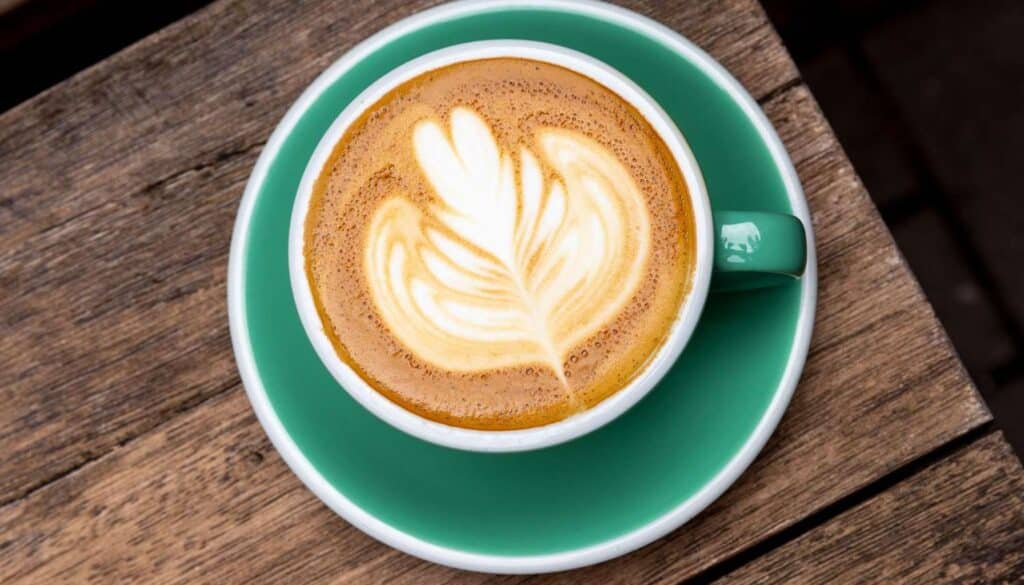
Espresso serves as the foundation for a variety of popular coffee drinks. Understanding these variations can enhance your appreciation of this versatile beverage.
Single and Double Espresso
A single espresso, or “solo,” is a shot of espresso, typically around 1 ounce. A double espresso, or “doppio,” is two shots brewed simultaneously, yielding about 2 ounces of espresso. The double espresso is the standard base for most espresso drinks.
Ristretto
Ristretto, meaning “restricted” in Italian, is a shorter shot of espresso made with the same amount of coffee but half the water. This results in a more concentrated, intense flavor.
Americano
An Americano is made by adding hot water to a shot of espresso, diluting it to the strength of regular drip coffee while retaining the espresso’s unique flavor profile.
Cappuccino
A cappuccino consists of equal parts espresso, steamed milk, and frothed milk. This classic drink offers a balanced combination of rich coffee and creamy milk.
Latte
A latte is similar to a cappuccino but with more steamed milk and a light layer of foam on top. It’s a milder, creamier coffee drink that is often enjoyed with flavored syrups.
Flat White
Originating from Australia and New Zealand, a flat white is made with a shot of espresso and steamed milk, with a thin layer of microfoam. It’s smoother than a cappuccino and less milky than a latte.
Macchiato
An espresso macchiato is a shot of espresso “stained” with a small amount of steamed milk. This drink emphasizes the espresso while softening its intensity with a hint of milk.
Mocha
A mocha combines espresso with steamed milk and chocolate syrup, topped with whipped cream. It’s a sweet, indulgent treat for those who enjoy chocolate and coffee together.
The Health Benefits of Espresso
Beyond its rich flavor and cultural significance, espresso offers several health benefits that make it more than just a delightful beverage.
Boosts Long-Term Memory
Studies have shown that the caffeine in espresso can enhance long-term memory by improving the brain’s ability to retain and recall information. This makes espresso a great choice for students and professionals alike.
Enhances Concentration
Espresso provides a quick energy boost, improving focus and concentration. This is due to caffeine’s ability to stimulate the brain and increase dopamine levels, which help with alertness and mental clarity.
Rich in Antioxidants
Espresso is packed with antioxidants, which help combat free radicals in the body. These antioxidants contribute to overall health and can reduce the risk of chronic diseases.
Increases Physical Performance
Consuming espresso before physical activity can enhance performance. The caffeine increases adrenaline levels, which prepares the body for exertion and reduces perceived effort, allowing for better workout results.
Low in Calories
A shot of espresso contains very few calories, making it a guilt-free choice for those watching their caloric intake. It provides a quick energy boost without adding significant calories to your diet.
Reduces Risk of Stroke
Regular consumption of espresso has been linked to a lower risk of stroke, particularly in women. The antioxidants and anti-inflammatory properties of coffee contribute to cardiovascular health.
Aids in Weight Loss
Espresso can support weight loss efforts by boosting metabolism and enhancing physical performance. It also helps in reducing muscle pain after intense exercise, encouraging more consistent workout routines.
Improves Digestion
Espresso stimulates the production of stomach acid, aiding digestion. It can be particularly beneficial for those with sluggish digestive systems.
Lowers Risk of Diabetes
Regular espresso consumption has been associated with a reduced risk of type 2 diabetes. The antioxidants in coffee help improve insulin sensitivity and glucose metabolism.
Enhances Mood
The caffeine in espresso is a powerful mood enhancer. It can help reduce the risk of depression and improve overall mental well-being by stimulating the release of neurotransmitters like dopamine and serotonin.
Frequently Asked Questions
What is espresso?
Espresso is a concentrated coffee beverage brewed by forcing hot water under high pressure through finely-ground coffee beans, resulting in a rich and flavorful drink with a characteristic foamy crema on top.
How is espresso different from regular coffee?
Espresso is made using a specific brewing method that involves high pressure and a fine grind, resulting in a more concentrated and intense flavor compared to regular drip coffee.
What equipment do I need to make espresso at home?
To make espresso at home, you need an espresso machine capable of maintaining stable pressure and temperature, a burr grinder for a fine and consistent grind, and fresh coffee beans.
What is the ideal grind size for espresso?
The ideal grind size for espresso is very fine, almost powdery, but not as fine as flour. This allows for the appropriate resistance needed to achieve a balanced extraction.
How much caffeine is in a shot of espresso?
A single shot of espresso (about 1 ounce) contains approximately 63 milligrams of caffeine, while a double shot (about 2 ounces) contains about 125 milligrams.
What are the different types of espresso drinks?
Popular espresso drinks include single and double espresso, ristretto, americano, cappuccino, latte, flat white, macchiato, and mocha, each varying in the amount of espresso, milk, and other ingredients used.
What is crema, and why is it important?
Crema is the golden, foamy layer on top of an espresso shot, formed by emulsified oils and gases from the coffee. It enhances the aroma and flavor of the espresso by trapping aromatic compounds.
Can I use any coffee beans for espresso?
While you can use any coffee beans to make espresso, beans specifically roasted for espresso often yield better results. These beans are typically roasted darker to enhance the rich, bold flavors desired in espresso.
How do I clean and maintain my espresso machine?
Regularly clean your espresso machine by backflushing with water and a cleaning solution, descaling to remove mineral buildup, and wiping down the group head, steam wand, and portafilter after each use.
What are the health benefits of drinking espresso?
Espresso offers several health benefits, including improved long-term memory, enhanced concentration, rich antioxidants, increased physical performance, and potential reductions in the risk of stroke and type 2 diabetes.
How many calories are in a shot of espresso?
A single shot of espresso contains very few calories, typically around 2-3 calories, making it a low-calorie beverage choice.
Why does my espresso taste bitter or sour?
Bitterness in espresso usually results from over-extraction, while sourness comes from under-extraction. Adjusting the grind size, extraction time, and water temperature can help achieve a balanced flavor.
What is a double espresso?
A double espresso, or “doppio,” is two shots of espresso brewed simultaneously, resulting in a stronger, more intense coffee experience.
Can I make espresso without an espresso machine?
While an espresso machine is the best way to make authentic espresso, you can use alternative methods like an AeroPress, Moka pot, or manual espresso maker to create a similar concentrated coffee.
What is a ristretto?
A ristretto is a shorter, more concentrated shot of espresso made with the same amount of coffee but half the water, resulting in a stronger and richer flavor profile.
How do I store coffee beans for espresso?
Store coffee beans in an airtight container in a cool, dark place to maintain their freshness. Avoid storing them in the fridge or freezer, as this can introduce moisture and affect the flavor.
Conclusion
Espresso is much more than just a coffee drink; it’s a rich cultural tradition with a profound impact on daily life. From its origins in Italy to its precise preparation methods and numerous health benefits, espresso continues to be a beloved beverage worldwide. Whether you enjoy it as a simple shot or as the base for a complex coffee creation, espresso offers a unique and enjoyable experience that caters to both the palate and the mind. So next time you sip on your espresso, remember you’re partaking in a drink with a storied history and a wealth of benefits.

